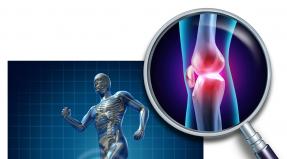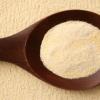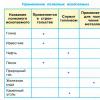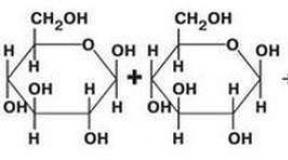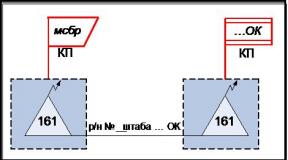"Analgin": what does it help from, how to use it? Instructions for use of the drug, contraindications and side effects, reviews. Analgin Borimed: instructions for use Special instructions and precautions
Excipients - talc, potato starch, powdered sugar, calcium stearate.
Composition injection solution: metamizole sodium at a concentration of 500 mg / ml, the excipient is water d / i.
Composition of Analgin in the form suppositories: 100 or 250 mg metamizole sodium , excipient - solid fat.
Release form
- 500 mg tablets. Packing No. 10 * 1 and No. 10 * 2; for hospitals - packing No. 10 * 30 and No. 10 * 390.
- Injection solution 500 mg / ml in 1 or 2 ml ampoules, package No. 10 * 1.
- Rectal suppositories (for children) 100 mg and 250 mg, package No. 10.
pharmachologic effect
Analgesic (pain reliever).
Pharmacological group: metamizone - this is analgesic-antipyretic from the group of drugs "NSAIDs - Pyrazolones". The OKPD code for Analgin is 24.41.31.122.
Pharmacodynamics and pharmacokinetics
Pharmacodynamics
Mechanism of action metamizole similar to the mechanism of action of other NSAIDs. The substance suppresses (indiscriminately) the activity of the COX enzyme, which is involved in the synthesis of prostanoids, reduces the formation of some Pg, endoperoxides, free radicals and bradykinins, and inhibits lipid peroxidation.
The effect of action cannot be called absolute, as is the case with other NSAIDs, since it can be blocked by stimulation of inflammatory receptors.
It prevents the conduction of proprioceptive and exteroceptive impulses along the Burdakh and Gaulle beams, increases the excitability threshold of the centers of pain sensitivity in the thalamus and the intensity of heat transfer.
Anti-inflammatory activity metamizole it is expressed slightly, due to which the drug practically does not affect the exchange of water and electrolytes (retention of water and Na + ions) and the mucous membrane of the alimentary canal.
In addition to relief of pain , the drug helps to reduce body temperature when hyperthermia and causes some antispasmodic effect (in particular, relieves smooth muscle spasm bile ducts and urinary tract).
Action metamizole develops within 20-40 minutes after taking the pill, the maximum severity of the effect is noted after two hours.
The results of a comparative analysis of the effectiveness of the application and analgin from temperature show that antipyretic activity metamizole less than aspirin , but at the same time much higher when compared with analgin and .
Analgesic effect when applying metamizole also more pronounced than when used Ibuprofen / Paracetamol .
Pharmacokinetics
The substance is quickly and very well absorbed from the alimentary canal. In the intestinal walls, it undergoes hydrolysis with the formation of a pharmacologically active metabolite.
Unchanged metamizole sodium in the blood is not detected (insignificant concentrations of the substance are determined in plasma only with the introduction of Analgin IV).
The connection of the metabolite with plasma proteins is 50-60%.
Metabolized metamizole in the liver, the excretion of the substance is carried out by the kidneys. T1 / 2 - 1-4 hours.
The substance passes into breast milk.
Indications for use: from what tablets, suppositories and solution for injection Analgin?
Main action metamizole — pain reliever ... This allows the drug to be used to relieve pain. different etiology: Analgin helps with headache, menstrual and toothache, pain associated with sciatica , neuralgia , myalgia , colic (intestinal, hepatic, or renal), (lung or myocardium), thrombosis of great vessels , dissecting aortic aneurysm , inflammatory processes (lumbago , pneumonia , myocarditis , pleurisy etc.), burns, injuries, decompression sickness, tumors, pneumothorax , perforation of the esophagus , orchitis , shingles , priapism , pancreatitis , post-transfusion complications , peritonitis .
Other indications for the use of Analgin in the form pills and injection solution:
- chorea ;
- arthralgia ;
- febrile syndrome with insect bites and acute urological, purulent or infectious diseases.
Analgin is used when others therapeutic measures do not relieve intense pain (acute or chronic).
What is Analgin injection solution for?
Analgin in ampoules is prescribed in exceptional cases: when enteral administration of the drug is impossible, to relieve very severe postoperative pain, in situations where you need to quickly bring down a high temperature. Sometimes (quite rarely) injections are used in therapy and .
At pain syndrome moderate(for example, for a headache), a pill is usually sufficient.
What does Analgin help with when using the drug in the form of suppositories?
Suppositories are intended for the treatment of children over one year of age.
In children, it is advisable to use Analgin for toothache, headache, pain with burns, myositis , radiculitis , neuralgia ... Suppositories with Analgin are also effective for pain in the postoperative period.
Contraindications for Analgin
The annotation lists the following contraindications to the use of Analgin:
- hypersensitivity to metamizole , derivatives pyrazolone , pyrazolidines (the drug is not prescribed, including to persons who, against the background of the use of these drugs, have been identified ), auxiliary components of tablets;
- aspirin history;
- syndrome of intolerance to simple analgesics or NSAIDs;
- oppression (depression) bone marrow or pathological conditions of the hematopoietic system;
- congenital forms hemolytic anemia caused by a deficiency of the cytosolic enzyme G6PD;
- acute intermittent porphyria ;
- unstable hemodynamics and / or arterial hypotension ;
- suspicion of acute surgical pathology.
V pediatric practice tablets are used from the age of ten, suppositories - in children over a year old.
The drug should not be administered intramuscularly to children under three months of age, as well as to children weighing up to five kilograms. Contraindication for intravenous administration of Analgin is childhood from three to eleven months.
Side effects
Side effects of the application metamizole sodium appear in the form:
- agranulocytosis ;
- granulocytopenia ;
- thrombocytopenia ;
- hypotension ;
- hemorrhages ;
- hypersensitivity reactions;
- interstitial nephritis .
Instructions for the use of Analgin
Analgin tablets: instructions for use
When using Analgin in tablets, the dosage is selected depending on the intensity of pain and the individual response of the body to treatment. It is considered optimal to use the minimum dose that controls fever and pain.
The tablets are swallowed whole and washed down with a large (about 200 ml) volume of liquid.
For an adult weighing more than 53 kg, a single dose of Analgin is 0.5-2 tablets. If one dose was not enough, the maximum single dose(two tablets) can be taken three more times during the day. The safe upper limit for a daily dose is 4 grams (eight tablets).
How to take Analgin tablets for toothache?
With a toothache, Analgin is taken with half a tablet. If this does not help relieve the pain, you can drink the remaining half.
Instructions for the use of Analgin in ampoules
The dose is selected depending on the severity of the pain syndrome, fever, age and body weight of the patient, individual response to treatment. It should be as small as possible, while still allowing for pain and fever control.
A single dose for patients weighing more than 53 kg varies from 500 mg to 1 g. This means that 1-2 ml of solution should be taken for one injection. If necessary, a single dose can be increased to 2.5 g (5 ml of solution). The permissible upper limit of the daily dose is 5 g metamizole sodium (corresponds to 10 ml of solution).
Method of administration of Analgin
The route of administration of the drug depends on the patient's condition and the desired therapeutic effect... In most cases, oral administration is sufficient to improve the patient's condition.
Analgin i / v and i / m is injected when you need to get the result quickly. With parenteral administration, the likelihood of developing anaphylactoid / anaphylactic reactions is higher than when taking pills or using suppositories.
For children under one year old, the solution can only be administered intramuscularly. In this case, the temperature of the injected fluid should be as close as possible to body temperature.
As a solvent, a complex solution of sodium lactate Bieffe (Ringer lactate), a 5% glucose solution or 0.9% water solution sodium chloride. Due to the limited stability of these solutions, they should be used immediately.
Due to potential incompatibility, Analgin solution is not recommended for use in the same system for intravenous infusion or in the same syringe with other drugs.
Instructions for use Analgin-quinine
The difference between the drug Analgin-quinine from the usual Analgin is that in addition to metamizole sodium (200 mg / tab.) Is also included (50 mg / tab.).
Quinine suppresses the center of thermoregulation located in the hypothalamus, and in the case of high doses - the visual and auditory zones of the cerebral hemispheres.
The drug is prescribed for pain syndrome of various origins, with infectious and inflammatory diseases and also (in combination with antispasmodics ) at biliary and renal colic .
Often Analgin-quinine in gynecology, it is prescribed for conditions after childbirth and abortion.
In accordance with the instructions, the drug is used from the age of twelve. For patients under 14 years of age, tablets should be taken 3 times a day. one at a time, from the age of 14, a single dose can be increased to two tablets.
Depending on the clinical picture during the day, you can take from one to six tablets (1-2 pcs. 1-3 r. / day).
As antipyretics Analgin-quinine without consulting a doctor, you can take no more than three days in a row, as analgesic - no more than five days in a row.
How long does Analgin work?
After taking the pill metamizole begins to act in twenty to forty minutes. It takes an average of two hours to achieve maximum effect.
The effect after the injection develops somewhat faster.
Additionally
In the elderly, as well as in patients with reduced renal function and impaired Clcr, Analgin is used in a lower dosage, since the metabolites metamizole sodium they may be cleared more slowly than in younger patients and patients with normally functioning kidneys.
With reduced hepatic and / or renal function, high doses should be avoided metamizole sodium ... Without dose reduction, only short-term use of the drug is possible. Long-term use is not possible.
Patients taking Analgin for a long time should have regular blood counts .
Does Analgin lower or increase blood pressure? This question is often asked by people prone to hesitation. blood pressure... The manufacturer's instructions indicate that the use of metamizole may be associated with the risk of developing dose-dependent hypotension, as well as hypersensitivity reactions.
Therefore, the advisability of using the drug in a dose exceeding 1 g requires an assessment of the benefit / risk ratio.
The solution is administered under close medical supervision while the patient is lying down.
To reduce the risk of a sharp decrease in blood pressure and to ensure the possibility of timely termination of the solution administration with the development of anaphylactoid / anaphylactic reactions, Analgin IV must be administered very slowly (the rate of administration should not exceed 1 ml / min).
To reduce the adverse impact metamizole on the gastric mucosa, pharmacists recommend replacing regular Analgin with a drug Analgin Ultra ... These tablets are coated with a protective coating, due to which metamizole less irritating to the digestive tract.
The use of Analgin and Diphenhydramine
The lethal dose in tablets is 15 to 20 grams.
Treatment: gastric lavage (the procedure is carried out using a probe), induction of vomiting, the use of saline laxatives and enterosorbents , alkalizing urine, holding forced diuresis ... In the future, therapy is symptomatic, aimed at regulating and maintaining the impaired functions of vital organs.
Interaction
the effect metamizole reinforce caffeine , , barbiturates , H2 antihistamines. Propranol helps to slow down the inactivation of the substance.
The use of Analgin in combination with thiamazole and sarcolysin can cause development leukopenia ... In combination with tranquilizers and sedatives, the analgesic effect is enhanced metamizole .
Allopurin , oral contraceptives and tricyclic antidepressants disrupt the metabolism of a substance and increase its toxicity.
Concomitant use with NSAIDs or analgesics-antipyretics provokes a mutual increase in toxicity, with derivatives phenothiazine - a pronounced increase in body temperature.
Combined with myelotoxic drugs increased hematotoxicity metamizole , inducers of microsomal hepatic enzymes (for example, phenylbutazone ) weaken the effect of the drug.
Metamizole increases activity hypoglycemic agents for oral administration, , GK and indirect anticoagulants , displacing them from the connection with blood proteins. Reduces plasma concentration cyclosporine .
Application penicillin , colloidal blood substitutes and radio-opaque substances during the period of treatment with Analgin is contraindicated.
Terms of sale
The tablets are available without a prescription. A prescription is required for the purchase of suppositories and injection solution.
Prescription in Latin (intramuscular injection of a solution to a child 2 years old):
Rp: Sol. Analgini 50% - 1.0
D.t.d. N 2 in amp.
S. 0.2 ml / m (0.1 ml / year of life).
Storage conditions
Analgin solution and tablets should be stored at a temperature of 15-25 ° C, suppositories - at a temperature of no more than 15 ° C.
Shelf life
The shelf life of tablets is five years, solution and suppositories are three years.
special instructions
What is Metamizole Sodium?
Metamizole Is a derivative of a five-membered heterocyclic lactam pyrazolone , non-narcotic pain reliever .
The gross formula of the substance is C13H16N3NaO4S.
According to the State Pharmacopoeia, the substance is in the form of a white or slightly yellowish crystalline powder, which decomposes quickly in the presence of moisture. Easily soluble in water and difficult in ethanol. It is almost impossible to dissolve the powder in chloroform, ether and acetone.
Wikipedia states that for the first time metamizole was synthesized by the German organic chemist L. Knorr in 1920.
Released in the process of biotransformation metamizole the active metabolite can stain urine red.
Reaction of Analgin and Hydroperite
Chemists-enthusiasts Analgin with used to make a "smoke". To do this, the components are taken in a 3: 1 ratio and ground into powder in different (this is very important!) Containers.
When working with reagents, gloves should be worn (when grinding different preparations, wear different gloves so that particles Hydroperita and Analgin did not detonate in their hands), and at the end of the work - wash your hands thoroughly.
After crushing the tablets, powders from different containers are poured into one jar and mixed. The reaction starts at a temperature of 25-30 ° C.
Analogs
Matching ATX level 4 code:Synonyms: Baralgin , Analgin Ultra , Optalgin .
Analogues with a similar mechanism of action: Acophilus , Bralangin , Pentabufen , , Spazmolgon , .
Analgin for children
Can Analgin be given to children?
Analgin is used on condition that other therapeutic measures are ineffective.
Candles are prescribed after a year, tablets - from ten years. The solution can be used in children of the first year of life (the route of administration depends on the age of the child).
Typically in children younger age for febrile conditions, rectal suppositories are most often used. This method of administration provides a faster flow of the active substance into the blood and, at the same time, eliminates its negative effect on the gastrointestinal mucosa.
At a temperature that is poorly confused by other means, parenteral administration is indicated. metamizole sodium in combination with antispasmodics and antihistamines .
Instructions for tablets for children
Taking a pill for fever and pain, it is swallowed whole, without chewing, and washed down with a large (about 200 ml) volume of liquid.
If the drug is used to lower the temperature, a single dose for patients under the age of fourteen is 10 mg / kg, if for pain relief - from 8 to 16 mg / kg.
For adolescents over fifteen years of age, the dosage in tablets at one time is up to 1 g metamizole (two tablets). If this does not allow you to achieve desired effect, the highest single dose can be taken three more times during the day. The permissible upper limit of the daily dose is 2 g.
Instruction for injection solution
To decline elevated temperature children usually need 10 mg / kg metamizole .
In children under the age of fourteen, a single dose ranges from 50 to 900 mg (or from 8 to 16 mg / kg). The dose and route of administration of the drug are determined depending on the age of the patient.
A single dose for adolescents weighing from 46 to 53 kg is from 400 to 900 mg (from 0.8 to 1.8 ml of solution). For adolescents weighing more than 53 kg, Analgin is prescribed in the same dosage as for adults.
Doses greater than 1 g are associated with a risk of developing hypotensive reactions .
Instructions for analgin suppositories for children
Suppositories are administered rectally. The daily dose for children from 12 months to three years is one suppository of 100 mg. Children 4-7 years old during the day can enter two suppositories of 100 mg (first, one suppository is administered, and after 4-6 hours, if necessary, a second) or one suppository 250 mg.
Children 8-14 years old are administered 1-2 suppositories of 250 mg during the day (one at a time, with an interval of 4-6 hours between injections).
After using the drug, the child should remain in the supine position for another half hour.
The duration of treatment depends on the clinical situation and usually ranges from 1 to 3 days.
Alcohol compatibility
The use of Analgin in combination with alcohol enhances the effects (in particular, sedative) of the latter.
Can I drink Analgin during pregnancy? Use of the drug during lactation
Can pregnant women use Analgin?
There is no sufficient data on the use of Analgin during pregnancy. The safety category for the fetus according to the FDA classification has not been established.
Absolute contraindications for use are the first three and the last one and a half months of pregnancy. In the second trimester, use is possible based on the results of a risk / benefit assessment.
Is Analgin compatible with breastfeeding?
During lactation, the use of the drug is contraindicated. In exceptional cases, feeding is resumed 48 hours after administration of the solution / tablet intake.
Content
Analgin is a non-steroidal anti-inflammatory drug (NSAID) made from pharmacological group pyrazolones, which has analgesic and antipyretic effects. Latin name means - analgin, it reduces the formation of endoperoxides, free radicals, bradykinins. The drug does not affect the exchange of water, electrolytes, the mucous membrane of the alimentary canal. When inflammatory receptors are stimulated, the effectiveness of the medication decreases.
Composition and form of release
The composition of Analgin depends on the form of release. The tool is available in the form of tablets, rectal suppositories for children or an injection solution.
Analgin's action
The drug Analgin inhibits the activity of the COX enzyme involved in the synthesis of prostaglandins, inhibits lipid peroxidation. It blocks pain impulses along the Burdakh and Gaulle beams, increases the excitability threshold of pain centers in the thalamus and the intensity of heat transfer. The remedy relieves pain, lowers body temperature during hyperthermia, has an antispasmodic effect - it relaxes the muscles of the bile ducts.

Analgin is an antibiotic or not
The drug is a non-narcotic analgesic that scientists synthesized almost a century ago. The drug, unlike antibiotics, does not slow down the growth of bacteria. Its main task is to block the transmission of signals pain sensation to the brain. This distinguishes the drug from narcotic (opioid) analgesics: they act directly on the brain.
Indications for use
The medicine is taken to relieve pain syndrome of various origins. The drug is effective for:
- headache;
- sciatica, lumbago (pain in the spine);
- myocarditis;
- menstrual pain;
- toothache;
- intestinal, hepatic, renal colic;
- neuralgia;
- pneumonia, pleurisy;
- myocardial infarction;
- thrombosis of great vessels;
- dissecting aortic aneurysm;
- inflammatory processes;
- burns, injuries, tumors;
- pneumothorax;
- shingles;
- pancreatitis, peritonitis.
Tablets or injections are used for chorea, rheumatism, arthralgia, febrile symptom after insect bites, visiting exotic countries, for urological, infectious or purulent diseases. The drug is taken in addition to the above in cases where the usual treatment does not eliminate the pain syndrome of an acute or chronic nature.
The choice of the form of the drug depends on certain factors. Tablets are prescribed in most cases because of the ease of use and compliance with the regimen. Analgin in ampoules ( injection solution) is prescribed if enteral administration of the drug is impossible, after operations in cases of severe pain, if necessary, quickly reduce the temperature, in the treatment of arthritis, osteochondrosis.
How to take Analgin
The use and dosage of analgin directly depend on the nature, strength of pain, adverse reactions, the causes of the pain syndrome, the body's response to treatment. The optimal dose is considered to be one that controls fever and pain in minimal amounts. Most often, the medication is taken orally. With parenteral use, allergic reactions develop more often. In case of an overdose of the drug, gastric lavage with a probe, forced diuresis, saline laxatives, enterosorbents are prescribed.
Analgin in ampoules
The dose is selected individually, depending on the strength of the pain syndrome, the age and weight of the patient, the body's response to treatment. Large doses are not recommended, they are calculated so that the minimum amount of the drug stops the discomfort. For patients weighing more than 53 kg, a single dose of 500 mg to 1 g is prescribed, that is, 1-2 ml of solution is enough for one injection. If necessary, the dose is increased to five ml. The upper limit of the daily dose of the drug is 5 g or 10 ml of solution. Intravenous, intramuscular administration is used if pain relief is needed quickly.
A solvent for the preparation of drug infusions can be a 5% glucose solution, Bieffe's sodium lactate solution, 0.9% sodium chloride solution. Analgin is potentially incompatible with some other drugs, so it cannot be used in the same intravenous infusion system or syringe with other medicines.
Analgin tablets
Adults weighing more than 53 kilograms take from half to two tablets of Analgin, washed down with plenty of water (more than 200 milliliters). If the pain syndrome does not go away after one dose of the drug, the drug is taken repeatedly in an amount of up to two tablets no more than three times a day. The maximum number of tablets taken per day is 8 pieces. For toothache, half a tablet is recommended. If the pain persists, drink the other half. In this case, it is necessary to brush your teeth before taking the medicine, rinse your mouth with a solution of water and soda.
Quinine in the composition of the agent suppresses the thermoregulatory center located in the hypothalamus. As an antipyretic Analgin-quinine is used no more than three days, as an analgesic - no more than five. If the course of treatment for health reasons needs to be increased, a mandatory consultation with a specialist is required. The medication acts quickly, after taking it until the patient's condition improves, it takes from twenty minutes to two hours, depending on the nature of the pain.
Candles
Instructions for the use of analgin in the form of rectal suppositories for children gives the following instructions for using the drug. Children from two to three years old are injected with half a candle, 0.1 g each, from four to five years old - one suppository, from five to seven years old - two candles a day. At the age of seven to fourteen years, 0.25 gram candles are used and one to three pieces are administered per day. The course of treatment is prescribed by a pediatrician.
special instructions
In case of impaired renal function, in old age, Analgin is recommended in a lower dosage - metamizole metabolites are excreted from the body more slowly. If it is necessary not to reduce the dose, only short-term use of the medication is possible. With a long course, patients regularly do a blood test for counting leukocytes. With caution, the drug is used with low blood pressure, since the use of the drug is associated with the risk of hypotension. In this case maximum dose means - 1 g. In case of stomach problems, Analgin Ultra is prescribed in a shell.
During pregnancy
The medicine is not recommended for use in pregnant women., especially in the first trimester and in the last 6 weeks, due to the negative impact on the development of the fetus. The medication is quickly absorbed and leaves with milk, so it is not recommended to use it during lactation. If necessary, during pregnancy, the medicine can be used strictly in consultation with the doctor and after comparing the benefits and risks.

For children
Pills should not eliminate pain in children due to the high percentage of the active substance. To relieve pain in children, candles are used - a drug in suppositories... The medicine is indicated for children over two years of age. The drug Analgin is used for toothache, headache, after burns, with sciatica, myositis, neuralgia. Suppositories are used to eliminate pain after surgery.
Drug interactions
Analgin is used in conjunction with Diphenhydramine, if necessary, to reduce a very high temperature. The best effect is achieved by an injection of the so-called "triad" - Analgin with Diphenhydramine and Papaverine. This mixture is contraindicated in case of allergy to lytic mixture, appendicitis. At high temperatures, the combination of Analgin with Tavegil, No-shpa, or No-shpa and Suprastin, administered intravenously, helps. For the treatment of acne, Analgin is mixed into powder with Levomycetin, Nystatin, Streptocide and diluted in one hundred milliliters of vodka or water with hypersensitivity.
The effect of the application is enhanced together with caffeine, codeine, barbiturates, h2-antihistamines. Metamizole activation is slower with propranolol. The combination of the drug with thiamazole, sarcolysin can lead to leukopenia. The general analgesic effect of metamizole is enhanced together with tranquilizers and sedatives.
Metabolism of metamizole is disrupted when taking allopurinol, oral contraceptives, tricyclic antidepressants. Mutual increase in toxicity occurs with the simultaneous use of other NSAIDs, analgesics, antipyretics. Taking with phenothiazine derivatives increases body temperature. Analgin should not be used together with penicillin, colloidal blood substitutes, radiopaque substances.
The hematotoxicity of the active substance increases when taken together with myelotoxic drugs. The effect is weakened together with inducers of microsomal hepatic enzymes, for example, with phenylbutazone. The active substance increases the activity of hypoglycemic drugs for oral use, Indomethacin, HA and indirect anticoagulants.
Side effects of Analgin
The effects after using the drug are associated with the action of sodium metamizole. Among them are:
- agranulocytosis;
- granulocytopenia;
- thrombocytopenia;
- hypotension;
- hypotension;
- hypothermia;
- hemorrhage;
- hypersensitivity reactions;
- interstitial nephritis.
Contraindications
In pediatrics, medicine in the form of tablets is contraindicated in children under the age of ten, in the form of suppositories - under two years of age. Intramuscular administration is not prescribed for children under three months (in some cases, up to eleven months) or with a weight of less than five kilograms. Others contraindications are:
- hypersensitivity, intolerance to the active substance - metamizole, pyrazolone derivatives, pyrazolidine, and other auxiliary elements of the drug;
- aspirin bronchial asthma;
- intolerance to simple analgesics and other NSAIDs;
- pathologies in the hematopoietic system, bone marrow depression;
- congenital hemolytic anemia due to deficiency of the cytosolic enzyme G6PD;
- acute intermittent porphyria;
- arterial hypotension;
- acute surgical pathology;
- pregnancy, lactation.
Terms of sale and storage
The medicine in tablets is dispensed from pharmacies without a prescription from a doctor.... You need a prescription to buy candles and mortar. The solution and tablets are stored at a temperature of 15-25 degrees Celsius, candles - no more than 15 degrees. The shelf life of the tablets is five years, the solution for injections and suppositories is three years.
Analogs
There are many drugs with a similar effect on the pharmaceutical market. According to the ATX code (anatomical-therapeutic-chemical classification) of the fourth level and a similar mechanism of action, the following analogs are distinguished:
- Akophil is a powder for preparing a suspension based on acetylsalicylic acid. It has anti-inflammatory, analgesic, antipyretic effects. Contraindicated in pregnant women, if peptic ulcer duodenum, stomach, alcoholism.
- Antipyrine - tablets. They have antipyretic, analgesic effects. The medicine is contraindicated in bronchial asthma from aspirin, renal and hepatic failure, hyperkalemia, pregnancy.
- Bralangin - tablets, solution, rectal suppositories... Eliminates pain syndrome, spasms. The medicine is contraindicated in hypertension, in the first and second trimester of pregnancy, pain with an unclear location, bronchial asthma, liver failure, kidney failure.
- Pentabufen - tablets. Eliminates pain syndrome of any origin, is indicated for acute respiratory infections, acute respiratory viral infections, flu. The medicine may have side effects at long-term use: nausea, vomiting, headache, anemia, leukopenia, skin rash, itching.
- Revalgin - tablets, injection solution. It has an analgesic spasmolytic non-narcotic effect. The drug is not prescribed for acute hepatic porphyria, angle-closure glaucoma, biliary atony and Bladder breastfeeding.
- Spazmalgon - tablets, injection solution. Acts quickly as a pain reliever, antispasmodic... The drug is not prescribed for children under six years of age, for pregnant women in the first and third trimesters of pregnancy, for angina pectoris, tachycardia, intestinal obstruction, atrioventricular blockade.
- Tetralgin - tablets. The drug relieves pain symptoms in arthralgia, dental diseases, neuralgia, algodismenorrhea, myalgia. The medicine is contraindicated for bronchospasm, arrhythmias, alcoholism, traumatic brain injury, intracranial hypertension.

Analgin price
The drug is produced by many Russian and foreign pharmaceutical companies... The price is affordable, its variations depend on the form of release and the manufacturer of the drug. The price of Analgin candles varies around 150 rubles.
|
Tablets price, rub. |
Solution price, rub. |
|
|
36.6 Myasnitskaya |
||
|
GORZDRAV |
||
|
Diaspharm |
Dosage form:
solution for intravenous and intramuscular administration.Description: Transparent colorless or slightly colored liquid.
Composition
active substance: metamizole sodium - 250 mg or 500 mg;
auxiliary substance: water for injection - up to 1 ml.
Pharmacotherapeutic group:
analgesic non-narcotic agent.ATX code
Pharmacological properties
Pharmacodynamics
It has an analgesic, antipyretic and weak anti-inflammatory effect, the mechanism of which is associated with the inhibition of prostaglandin synthesis. Derived from pyrazolone.
Pharmacokinetics
At intravenous administration: onset of action - after 5-10 minutes, maximum effect - after 5-30 minutes, duration of action - up to 2 hours. It is metabolized in the liver, an insignificant concentration of unchanged metamizole sodium is found in plasma, excreted by the kidneys. In therapeutic doses, it passes into breast milk.
Indications for use
Pain syndrome (mild and moderate): incl. neuralgia, myalgia, arthralgia, bilious colic, intestinal colic, renal colic, injuries, burns, decompression sickness, shingles, orchitis, sciatica, myositis, postoperative pain syndrome, headache, toothache, algodismenorrhea. Feverish syndrome (infectious and inflammatory diseases, insect bites - mosquitoes, bees, gadflies, etc., post-transfusion complications).
The drug is intended for symptomatic therapy, reducing pain and inflammation at the time of use, does not affect the progression of the disease.
Contraindications
Hypersensitivity to pyrazolone derivatives (phenylbutazone, tribuzone), a tendency to bronchospasm.
Severe liver and / or kidney dysfunctions, deficiency of glucose-6-phosphate dehydrogenase, blood diseases, inhibition of hematopoiesis (agranulopitosis, cytostatic or infectious neutropenia), as well as anemia and leukopenia. Bronchial obstruction, rhinitis, urticaria provoked by the intake of acetylsalicylic acid or other non-steroidal anti-inflammatory drugs (including a history), active liver disease, condition after coronary artery bypass grafting; confirmed hyperkalemia, erosive and ulcerative changes in the mucous membrane of the stomach and duodenum, active gastrointestinal bleeding, inflammatory bowel disease. Infant age up to 3 months
Application during pregnancy and lactation.
Do not use during pregnancy (especially in the first 3 months and the last 6 weeks) and during lactation.
Carefully
Ischemic disease heart, chronic heart failure, cerebrovascular disease, dyslipidemia / hyperlipidemia, diabetes, peripheral arterial disease, smoking, creatinine clearance less than 60 ml / min. anamnestic data on the development of ulcerative lesions gastrointestinal tract, presence of H. pylori infection, elderly age, long-term use of non-steroidal anti-inflammatory drugs, severe somatic diseases, concomitant use of oral glucocorticosteroids (including prednisolone), anticoagulants (including warfarin), antiplatelet agents (including acetylsalicylic acid, clopidogrel), selective inhibitors reuptake of serotonin (including citalopram, fluoxetine, paroxetype, sertraline).
Particular care is required when prescribing to patients with systolic blood pressure below 100 mm Hg. Art. or with circulatory instability (for example, with myocardial infarction, multiple trauma, beginning shock), with anamnestic indications of kidney disease (pyelonephritis, glomerulonephritis) and with a long alcoholic history.
Method of administration and dosage
The drug is administered intravenously (with severe pain) or intramuscularly in 1 - 2 ml 250 mg / ml or 500 mg / ml solution 2-3 times a day, but not more than 2 g per day.
Children are administered at the rate of 0.1 - 0.2 ml of 500 mg / ml solution or 0.2 - 0.4 ml of 250 mg / ml solution for every 10 kg of the child's body weight 2-3 times a day.
For children under 1 year old, the drug is administered only intramuscularly, the course is not more than 3 days.
Side effect
In therapeutic doses, the drug is well tolerated. When using the drug in some patients, side reactions may occur: allergic reactions (skin rash, Quincke's edema; rarely anaphylactic shock, Stevens-Johnson and Lyell syndromes, bronchospasm); with prolonged use, agranulocytosis, leukopenia, thrombocytopenia, arterial hypotension, interstinal nephritis may occur. Renal dysfunction, oliguria, anuria, proteinuria, red urine staining.
With a tendency to bronchospasm, it is possible to provoke an attack. With intramuscular injection, infiltrates at the injection site are possible.
Overdose
Symptoms: nausea, vomiting, gastralgia, oliguria, hypothermia, decreased blood pressure, tachycardia, shortness of breath, tinnitus, drowsiness, delirium, impaired consciousness, acute agranulocytosis, hemorrhagic syndrome, acute renal and / or hepatic failure, convulsions, paralysis of the respiratory muscles.
Treatment: induction of vomiting, gavage gastric lavage, saline laxatives, activated charcoal; carrying out forced diuresis, hemodialysis, during development convulsive syndrome- intravenous administration of diazepam and fast-acting barbiturates.
Interaction with other medicinal products
Due to the high likelihood of pharmaceutical incompatibility, do not mix with other drugs in the same syringe. Enhances the effects of ethanol; simultaneous use with chlorpromazine or other phenothiazine derivatives can lead to the development of severe hyperthermia.
Radiopaque contrast agents, colloidal blood substitutes and penicillin should not be used during treatment with metamizole sodium. With the simultaneous appointment of cyclosporine reduces the concentration of the latter in the blood. Metamizole sodium, displacing oral hypoglycemic drugs from the connection with protein, indirect anticoagulants, glucocorticosteroids and indomethacin, increases their activity. Phenylbutazone, barbiturates and other hepatoinducers, when administered simultaneously, reduce the effectiveness of metamizole sodium. Concomitant administration with other non-narcotic analgesics, tricyclic antidepressants, hormonal contraceptives and allopurinol can lead to increased toxicity.Sedatives and tranquilizers enhance the analgesic effect of metamizole sodium. Thiamazole and sarcolysin increase the risk of developing leukopenia. The effect is enhanced by codeine, histamine H2 blockers and propranolol (slows down inactivation). Myelotoxic drugs increase the manifestation of hematotoxicity of metamizole sodium.
special instructions
When treating children under 5 years of age and patients receiving cytostatic agents, analgin should be taken only under the supervision of a physician. In patients with atopic bronchial asthma and pollinosis there is an increased risk of developing hypersensitivity reactions. With prolonged (more than a week) use, it is necessary to control the picture of peripheral blood and functional state liver. Against the background of taking analgin, agranulocytosis may develop, and therefore, if an unmotivated rise in temperature, chills, sore throat, difficulty swallowing, stomatitis is detected, as well as with the development of vaginitis or proctitis, immediate discontinuation of the drug is necessary. Intolerance is very rare, but the threat of shock after intravenous administration of the drug is relatively higher than after taking the drug inside. It is not permissible to use it to relieve acute abdominal pain (until the cause is clarified). For intramuscular injection, a long needle must be used.
Release form
Solution for intravenous and intramuscular administration of 250 mg / ml or 500 mg / ml (ampoules) - 1 or 2 ml. 10 ampoules each with an ampoule knife or scarifier and instructions for use in a carton box.
5 ampoules in a blister strip packaging. 2 blisters each with an ampoule knife or scarifier and instructions for use in a cardboard box. When packing ampoules with a break point or ring, the ampoule knife or scarifier is not inserted.
Storage conditions
List B. In a dry, dark place, at a temperature not exceeding 25 ° C. Keep out of the reach of children.
Shelf life
3 years. Do not use after the expiration date printed on the package.
Dispensing from pharmacies
Dispensed by prescription.
Manufacturer / organization accepting claims
FSUE "Armavir Biological Factory"
Address: 352212, Krasnodar Territory, Novokubansky District, pos. Progress, st. Mechnikova, 11
"Analgin" is an analgesic with analgesic, anti-inflammatory and antipyretic effects. "Analgin" is a pyrazolone derivative. Available in several forms: in, solution for injection and in the form of rectal suppositories. The main active ingredient "Analgin" is sodium metamizole. One tablet of the drug contains 500 mg. Also, the composition includes auxiliary substances: potato starch, talc, calcium stearate, refined sugar. The tablets are usually white or yellowish in color, with a bitter taste. They are produced in non-cell packaging of 10 pieces, in blisters (contour packs) of 10 pieces. The solution for injection contains 250 mg (25-) or 500 mg (50 percent) of metamizole sodium. Rectal suppositories, depending on the dosage, contain 100 mg or 250 mg active substance... Powder "Analgin" quickly dissolves in water, which is very convenient if you need to reach the maximum drug content in the body as soon as possible.
The components of analgin are quickly absorbed into the body and exert their effect within 20-40 minutes. Within two hours, the effect of the drug reaches its maximum.
Indications for use
Assigned "Analgin" with a slight or moderate pain syndrome, in particular, with headache, myalgia, neuralgia, postoperative pain, dysmenoria, with painful menstruation, with renal or hepatic colic in complex therapy with antispasmodics. It is recommended to take the drug for fever caused by infectious and inflammatory diseases. To reduce fever, you can also use "Analgin", but you must first establish a diagnosis and the cause of the increase in body temperature.
Contraindications and side effects
It is not recommended to take "Analgin" in case of hypersensitivity to the components of the drug and pyrazolone derivatives (tribuzon, butadione), with a tendency to bronchospasm, impaired renal and liver function, blood diseases. You should not use the drug on time, especially during and within six weeks.
Do not inject "Analgin" under the skin: irritation may occur.
Despite the good tolerance of "Analgin", when taking the drug, side effects such as skin rash, Quincke's edema, and in rare cases - anaphylactic shock are possible. With a tendency to bronchospasm, taking "Analgin" can provoke a bronchopulmonary attack. With prolonged use of the drug, leukopenia, agranulocytosis are possible. Also, sometimes there is a violation of the kidneys.
In case of an overdose, nausea, vomiting, diarrhea, abdominal pain, tinnitus, convulsions, diathesis, and skin rash may occur. When these symptoms appear, gastric lavage is necessary. In difficult cases, symptomatic therapy may be required.
Method of administration and dosage
"Analgin" is prescribed by mouth (tablets), intravenously or intramuscularly. The tablets are best taken after meals. The dose for adults, according to the instructions for use, is 0.25-0.5 g 2 or 3 times a day, for children - 5-10 mg per 1 kg of body weight 3-4 times a day. For rheumatism, it is recommended to take 0.5-1 g three times a day.
Maximum daily dose"Analgin" should not exceed 3 g.
In case of severe pain, "Analgin" is administered intramuscularly or intravenously. Adults are prescribed 1-2 ml of solution for injection (25% or 50%) 2-3 times a day, but the daily dose should not exceed 2 g of the drug. Children are prescribed 0.1-0.2 ml (50%) or 0.2-0.4 ml (25%) Analgin solution for every 10 kg of body weight.
Analgin is a non-steroidal anti-inflammatory drug. Has analgesic, antipyretic and mild anti-inflammatory effects
Shelf life
1. Shelf life Analgina ranges from 2 to 5 years. The date of manufacture and expiration date are indicated on the box, sealed cans, ampoules.
2. Release forms:
- Tablets of 0.5 g in blister packs or blisters. Stored up to 5 years.
- Solution in ampoules 25%, 50%, 1 and 2 ml. Stored up to 3 years.
- Rectal suppositories, 0.1 g in blisters. Stored up to 2 years.
The drug does not require special conditions storage. The shelf life will not change if stored in the refrigerator or at room temperature.
3. If 5-10 days remain until the end of the specified period, you can use the medication. This will not add side effects to the product.
4. The indicated expiration dates are not applicable when the ampoule is opened, the drug loses its properties. Printed tablets or candles from the packaging are contaminated and can cause poisoning.
5. Upon expiration of the term of use Analgin loses pharmacological properties and is capable of causing a number of adverse reactions such as toxic or food poisoning.
6. To understand Analgin expired or usable, as well as defective or not, check the terms of use and the production series on the packaging, ampoule or blisters.
7. The use of an expired drug increases the risk of developing food poisoning, row allergic reactions or it will be useless in terms of efficiency. Solution Analgina is capable of causing a greater number of adverse reactions, which requires more caution.
Storage conditions
1 ... At home, at a temperature not higher than + 25 ° C, it can be a cabinet or a refrigerator. Out of the reach of children.
2. Store in a dry place.
3. Do not leave in places with high humidity, with the possibility of contamination, as well as places exposed to direct sunlight. So they become partially or completely unusable.
4. Similar drugs Analgina are: Ketonof, Ketorolac, Citramon, Ibuprofen, Diklovenac, Nimesulide, Tempalgin, Pirisan.
Storage conditions in pharmacies and clinics
- In pharmacies, it must be stored in a specially designated drugs, closet or shelf. It is permissible to store close to other medicines. In clinics for medicines, a separate room is allocated, equipped according to special requirements, to which access is available only for medical staff... The room is locked with a key that is accessible only to the assigned person.
- The expired product is disposed of at the expiration of the term of use. At home, disposal does not require special conditions. Analgin corresponds to the waste group " B-drugs»Which are allowed to be thrown into the trash can. In pharmacies and clinics, the drug is disposed of in accordance with the disposal protocol of this institution.
- Storage equipment: a cabinet for medicines, a refrigerator for storing medicines, a separate shelf for ampoules, a hygrometer, a thermometer, a register for the use or disposal of medicines.
- Regulatory orders for the storage of medicines: Order of the Ministry of Health and social development RF "On the approval of the storage of medicinal products" and the order "On the approval of requirements for the organization of storage in pharmacies of various groups of medicinal products and medical products"
- The drug is produced in protective packages - cardboard boxes, be it ampoules, suppositories or tablets. This is the criterion for transportation Analgina ... No other conditions are required.
Application area Analgina
- Release form: for tablets - a cardboard box with 2 hermetically sealed blisters or plates of 10 tablets.
- For ampoules and suppositories - contour packaging. Country of origin: Russia. 603950, Nizhny Novgorod
It is applied:
Pain syndrome of various origins, weak or moderate (headache, migraine, toothache, neuralgia, myalgia, cardialgia, dysmenorrhea, renal colic, postoperative pain);
Feverish conditions in infectious diseases.
- Terms of dispensing from pharmacies: without a prescription.

